
Diseases and Pests of Bell Peppers
Identification, prevention and natural treatments
Contents
Bell pepper is a widely cultivated vegetable around the world. A demanding Solanaceae, bell pepper can be affected by numerous fungal, viral, and bacterial diseases.
Learn here to identify, prevent, and naturally treat the most common diseases and pests of bell pepper.
Viral diseases of pepper
Bell peppers are very sensitive to viral diseases. These viruses are spread by plant debris, the soil itself, weeds, or even piercing insects (such as aphids and thrips).
Tobacco mosaic
The tobacco mosaic virus is undoubtedly the most common, favoured by low light and high humidity. The virus of tobacco mosaic is recognised by the yellow-green patterns that appear on the foliage of the plant, and the deformed peppers with a bitter taste that result.
Prevention
- Ensure to clean the soil thoroughly before planting
- Use a manganese solution to water your bell pepper plants
- Spraying whey also provides a good preventive solution here
Treatment
Once it has entered the plant cells, it is impossible to destroy the virus. Therefore, you must pull out the affected plants to limit the spread to other bell pepper plants.
Fungal diseases of pepper
Fungal diseases, or cryptogamic diseases, develop in conditions of high humidity. They are caused by various fungi.
Grey mould
Grey mould is identified by wilting flowers, brown leaf spots, drying stems, and rotting fruits and roots. The excess of cold, stagnant water is responsible for the development of botrytis.
Prevention
- Space the ranks sufficiently at planting time
- Avoid excessive nitrogen inputs
- Mulch at the base and weed immediately around the plants
- Spray diluted horsetail manure at 10% every 15 days
Treatment
- Remove infected plants
- Treat the remaining plants with a garlic decoction, or Bordeaux mixture as a last resort

Fusarium wilt
Humidity combined with temperatures above 28°C, as well as slightly acidic soil, favours fusarium wilt. This is characterised by brown spots on the fruits, discolouration of the leaves, and overall wilting of the plant.
Prevention
- Mulch the vegetable garden soil to limit the spread of pathogenic spores in the soil
- Follow a crop rotation every 6 years
- Use healthy seed compost
- Balance and lighten the soil with well-matured compost
Treatment
Affected plants cannot be treated. To stop the spread of the disease, pull out the affected subjects and burn them.
Downy mildew
A very common fungal disease, downy mildew is caused by humidity and temperature fluctuations. It is easily recognisable by the brown spots bordered with yellow that appear on the upper side of the leaves. Eventually, the plant wilts and dries out.
Prevention
- Space your pepper plants to limit the proliferation of Phytophthora infestans spores
- Avoid proximity to other solanaceae (tomatoes, potatoes, aubergines…)
- Ensure good crop rotation
- Avoid wetting the foliage and preferably water in the morning
- Every 15 days, spray a horsetail decoction on the leaves
Treatment
- In case of confirmed infection, cut away the infected parts
- Spray an infusion of tansy on the rest of the plant
- Essential oil of oregano also provides broad fungicidal action against downy mildew
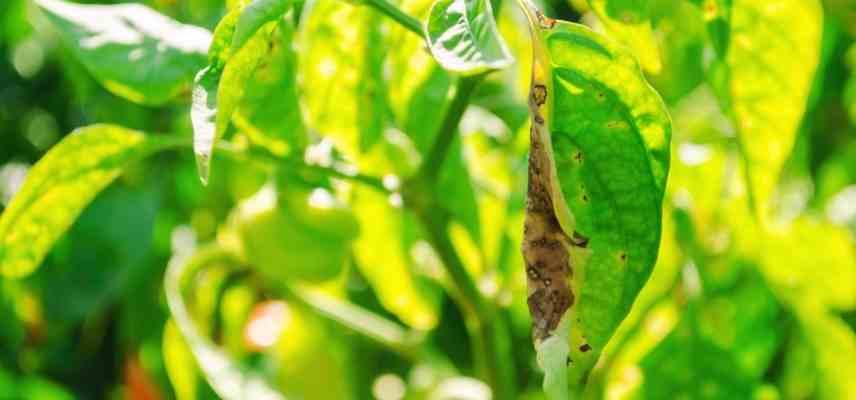
Downy mildew on pepper
Discover other Pepper seeds
View all →Available in 1 sizes
Available in 1 sizes
Available in 1 sizes
Available in 1 sizes
Available in 1 sizes
Available in 1 sizes
Available in 1 sizes
Available in 1 sizes
Available in 1 sizes
Available in 1 sizes
Bacterial diseases of pepper
Bacterial Spots
Bacteria Xanthomonas campestris cause the appearance of spots on the leaves and aerial organs of the pepper plant. A high number of spots leads to defoliation of the plant. Elongated brown cracks are also visible on the plant’s stems, and the fruits exhibit circular, wet, brown, and hard spots.
Prevention
- Disinfect your sowing equipment and use healthy seeds
- Clean the soil of dead leaves and plant debris
- Ensure crop rotation
Treatment
Copper-based fungicidal treatment, Bordeaux mixture helps combat bacterial spots.
Read also
Nettle manure: how to make it?The main pests of bell pepper
Aphids
Aphids migrate from one plant to another, forming a colony of piercing insects settled on the undersides of leaves, flowers, and inflorescences. Aphids cause leaf curling and deformation of flower buds and stems. They can also transmit diseases, including mosaic virus.
Prevention and Control
- Spraying with lemon balm infusion provides preventive protection for peppers against aphids
- Pyrethrum extract sprayed in the evening at dusk helps combat aphids
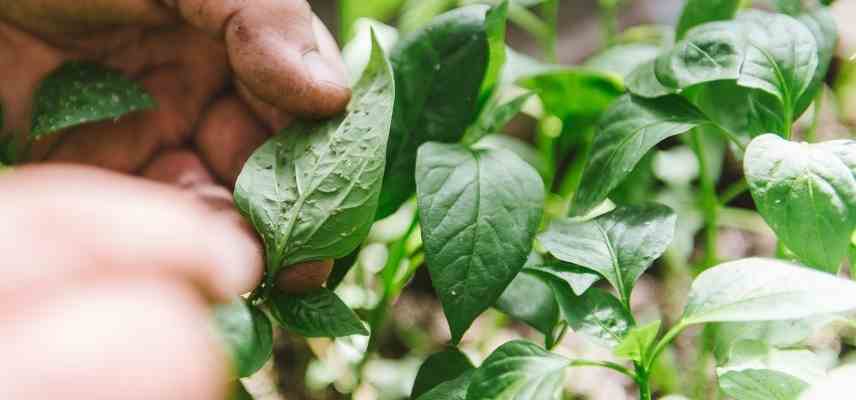
Aphids on pepper leaves
Thrips
Thrips are tiny insects, barely visible to the naked eye, that thrive in warm and dry weather. They colonise the tips of flowers and leaves of peppers, causing flower drop and plant dwarfism. Thrips can also transmit viruses to the plant.
Prevention and Control
- The use of blue sticky traps is effective for eliminating adults
- Garlic decoction combined with a black soap solution, as well as pyrethrum extract, are effective natural treatments against thrips
Whiteflies
Whiteflies, both adults and larvae, colonise the leaves of peppers, which become etiolated, dry, and eventually fall off. The whitefly is particularly prevalent in greenhouses, as it favours warm and dry conditions.
Prevention and Control
- Plant marigolds near peppers
- Ventilate the greenhouse and water the plants regularly
- Nettle manure sprayed on the undersides of leaves is a preventive and curative measure against whiteflies
- A mixture of water and black soap also helps to eliminate them
Spider Mites
The spider mite is an arachnid that enjoys heat and dryness, and attacks the leaves of peppers. The affected foliage dries out and then falls off. This leads to premature ripening of the fruits.
Prevention and Control
- Prevent the appearance of spider mites by spacing out the pepper plants
- Avoid using fertilisers that are too rich in nitrogen
- In case of a confirmed attack, treat with 1% white oils
- Ensure the biodiversity of your garden to attract its natural enemies
- Subscribe!
- Contents
































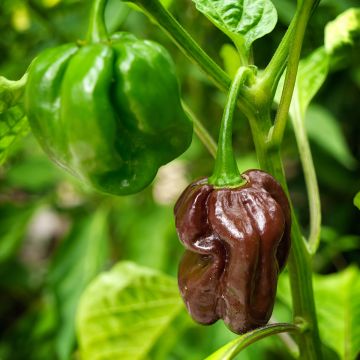
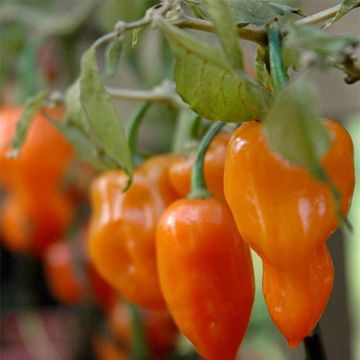

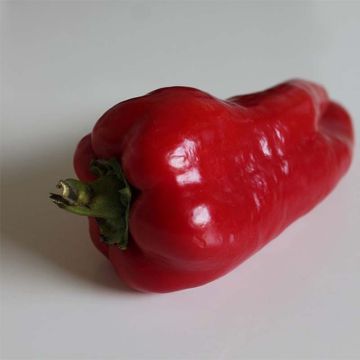
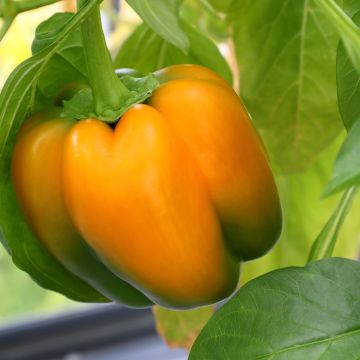


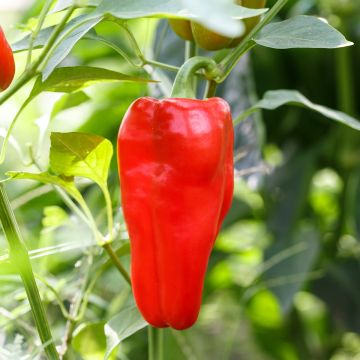


Comments